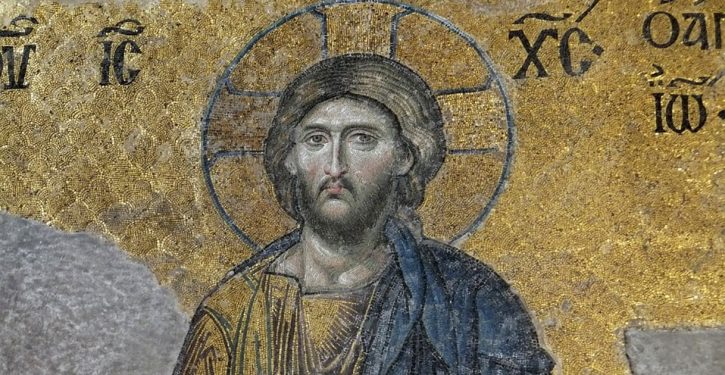
Thanks for joining our study about tax collectors in the Bible. Let’s begin with a musical introduction — a famous song about this profession.
From the Beatles to the Bible, today we focus on the relationship between Jesus and tax collectors. The enemies of Jesus (and even his friends) were critical of how He befriended fellow Jews who were considered traitorous — whose jobs were to squeeze money out of their community on behalf of the Roman authorities. In the process, many tax collectors were corrupt and enriched themselves.
With all that in mind, we examine “The Calling of Matthew” — my NIV Study Bible’s subtitle for this multi-faceted story where Jesus proclaims a significant aspect of His earthly ministry.
In the book of Matthew 9:1-8 immediately before Jesus met Matthew, Jesus healed a paralytic man. But unstated in the passages that follow is whether or not Matthew saw or heard about this miracle:
“As Jesus went on from there, he saw a man named Matthew sitting at the tax collector’s booth. ‘Follow me,’ he told him, and Matthew got up and followed him” (Matthew 9:9).
Unanswered is “Why Matthew obeyed Jesus with no hesitation?” Perhaps Matthew had heard about the paralytic’s miraculous healing while “sitting at the tax collector’s booth” and was moved by the Spirit. Maybe, Matthew thought, “Take this job and shove it.” Or, “I am destined to write a self-named first chapter of the world’s bestselling book, and Jesus is my agent.” Whatever Matthew’s reason for obedience, the next verses read:
“While Jesus was having dinner at Matthew’s house, many tax collectors and sinners came and ate with him and his disciples. When the Pharisees saw this, they asked his disciples, ‘Why does your teacher eat with tax collectors and sinners?’” (Matthew 9:10-11).
Later, upon hearing that question posed by his disciples, Jesus brilliantly answered:
“‘It is not the healthy who need a doctor, but the sick. But go and learn what this means: ‘I desire mercy, not sacrifice.’ For I have not come to call the righteous, but sinners’” (Matthew 9:12-13).
However, on the cross, Jesus, the Lamb of God, sacrificed Himself for the forgiveness of our sins and those of the world.
We know Matthew — a hated tax collector in need of what Jesus was offering, became one of His 12 disciples — an example of transformation through forgiveness. Also note that in addition to the book of Matthew, this foundational lesson appears in Mark 2:13–17 and Luke 5:27–31. And in both gospels, Matthew is referred to as “Levi,” his given Hebrew name.
Now we jump to another inspiring tax collector story found only in Luke’s gospel. The story begins when crowds gather as Jesus passes through Jericho. There, a short man named Zacchaeus, unable to see over the masses, climbed a tree to gain a better view. Although Zacchaeus was short in stature, he was tall when he stood on his riches earned from his job as chief tax collector. Jesus sees Zacchaeus in the tree and says:
“‘Zacchaeus, come down immediately. I must stay at your house today.’ So he came down at once and welcomed him gladly. All the people saw this and began to mutter [about Jesus] ‘He has gone to be the guest of a sinner’” (Luke 19: 5-7).
Immediately we read that Zacchaeus had major guilt about how he made his money. So he was anxious to turn his life around, seek forgiveness, and start anew:
“Zacchaeus stood up and said to the Lord, ‘Look, Lord! Here and now I give half of my possessions to the poor, and if I have cheated anybody out of anything, I will pay back four times the amount’” (Luke 19:8).
Notice that Zacchaeus addressed Jesus as “Lord” and quickly admitted his sin. All Jesus did was order Zacchaeus off the tree and invite Himself to the chief tax collector’s house. But Jesus turned Zacchaeus’s actions into a lesson for all sinners:
“Jesus said to him, ‘Today salvation has come to this house, because this man, too, is a son of Abraham. For the Son of Man came to seek and to save the lost’”(Luke 19:9-10).
Jesus and Zacchaeus were perfectly paired for this lesson. First, Jesus announced the respected Abrahamic lineage of the chief tax collector loathed by his community. (Akin to a member of royalty cheating his subjects.)
Second, Jesus calls Himself “the Son of Man” — a title in the Hebrew Bible reserved for the Messiah of which the ancient Jews were very familiar. (See Vol. 53 for more about “Son of Man.”)
Then Jesus tells Zacchaeus (and the crowd) that He forgives sin and “came to seek” and “save the lost.” Remember, because only God can forgive sin, Jesus has revealed His identity.
The term “tax collector” is often used in the New Testament gospels as an example of a shunned man at the lowest rung of society. Thus, if Jesus can associate with tax collectors — forgive and heal their sins — He can easily forgive those who think of themselves as more worthy or hold higher titles.
These two gospel lessons can apply to all modern-day sins. Jesus, through the Holy Spirit, can heal and forgive those who believe in Him. About that concept, here is what St. Paul poignantly wrote in 1 Timothy:
“Here is a trustworthy saying that deserves full acceptance: Christ Jesus came into the world to save sinners—of whom I am the worst” (1 Timothy 1:15).
Those who love Jesus know He is available 24/7. And for those who don’t, you can pray, read His Word, and invite Him into your heart. Jesus already knows who you are and is ready to call you down from your tree.
Author’s Note: All previous volumes of this series are here. The first 56 volumes are compiled into the book “Bible Study For Those Who Don’t Read The Bible.” Part Two, featuring volumes 57-113, will be published on Dec. 4 and available for pre-sale.
Myra Kahn Adams is a conservative political and religious writer with numerous national credits. Her books, “Bible Study For Those Who Don’t Read The Bible,” reprints the first 56 volumes of this popular study. “Part 2,” with the same title, reprints Vols. 57-113, is now available for pre-sale and published on Dec. 4.
Myra is also the Executive Director of SignFromGod.org, a ministry dedicated to education about the Shroud of Turin. Contact: MyraAdams01@gmail.com or Twitter @MyraKAdams.
Cross-posted at Townhall and Substack.



